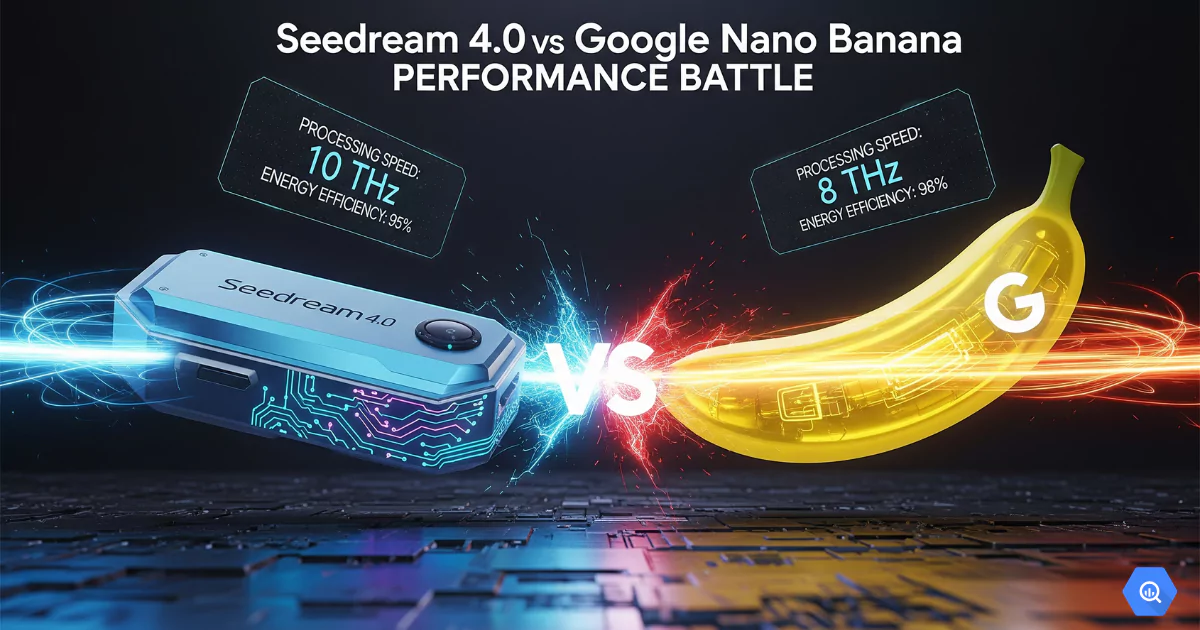Key Highlights:
- ByteDance launches Seedream 4.0 on September 9, 2025, directly challenging Google’s Nano Banana
- Claims 10x faster performance with 4K image generation in just 1.8 seconds
- Internal benchmarks show superior results over Gemini 2.5 Flash Image
- Priced at $30 per 1,000 generations with advanced editing capabilities
- TikTok parent company enters billion-dollar AI image generation market
Chinese tech giant fires back at Google’s viral success with faster, more powerful image creation tool that could reshape global AI competition
ByteDance Seedream 4.0 Launch: China’s Strategic AI Counterstrike
ByteDance just dropped a bombshell that has Silicon Valley scrambling for answers. The TikTok parent company officially launched Seedream 4.0 on September 9, 2025, positioning it as a direct challenger to Google’s wildly popular Nano Banana feature that has dominated social media headlines.
This isn’t just another AI tool launch – it’s China’s most aggressive move yet to challenge American dominance in the AI image generation market that’s worth billions and growing exponentially.
Seedream 4.0 vs Google Nano Banana: Performance Battle

ByteDance isn’t playing games with their performance claims. The company boldly states that Seedream 4.0 delivers ten times faster performance while challenging Google’s market dominance, with internal evaluation benchmarks showing superior results over Gemini 2.5 Flash Image.
The numbers speak volumes: Seedream 4.0 generates stunning 4K images in roughly 1.8 seconds per image, dramatically outpacing competitors who struggle to match this speed-quality combination.
AI Image Generation Speed: Technical Breakthrough
What sets Seedream 4.0 apart from Google’s offering is its revolutionary architecture. The platform uses a Mixture of Experts (MoE) architecture for fast, high-resolution results, unifying generation and editing in one seamless system that handles complex multimodal tasks.
This next-generation image creation model combines text-to-image synthesis, reference-based editing, and batch image creation in ways that Google’s Nano Banana currently cannot match, according to ByteDance’s technical specifications.
ByteDance AI Strategy: Beyond TikTok Dominance
This launch represents ByteDance’s broader strategy to compete beyond social media into core AI infrastructure. The company is leveraging its massive user base and AI expertise to challenge American tech giants on their home turf of artificial intelligence innovation.
Seedream 4.0 specializes in posters, infographics, and lifelike art with sharp text and high-resolution detail, targeting professional creative markets that Google has been trying to capture with Nano Banana.
Chinese AI Competition: Global Market Implications
The timing couldn’t be more strategic. As Google Nano Banana generates hundreds of millions of images monthly and creates viral social media trends, ByteDance is positioning Seedream 4.0 as the superior alternative for users seeking professional-grade results.
ByteDance claims Seedream 4.0 excels in prompt adherence, alignment, and aesthetics compared to Nano Banana, directly addressing the most common user complaints about existing AI image generators.
Seedream 4.0 Pricing Model: Competitive Market Entry
At $30 per 1,000 generations, Seedream 4.0 matches its predecessor’s pricing while delivering enhanced capabilities, making it an attractive alternative to Google’s API costs for developers and businesses.
The platform offers deterministic editing controls that preserve key elements across iterations, giving creators more control over their final outputs than many competitors provide.
Tech Industry AI Arms Race: What This Means
ByteDance’s Seedream 4.0 launch signals the beginning of a new phase in the global AI competition. Chinese tech companies are no longer content to follow American innovations – they’re actively challenging Silicon Valley’s dominance with superior technology claims.
This development puts pressure on Google to accelerate Nano Banana improvements and could trigger a wave of rapid innovation as both companies compete for market share in the exploding AI image generation sector.
The success or failure of Seedream 4.0 against Google’s Nano Banana will likely determine whether Chinese AI companies can successfully compete in global markets previously dominated by American tech giants.


